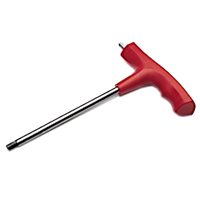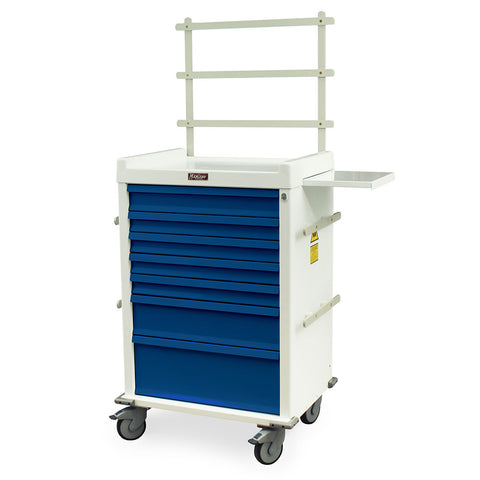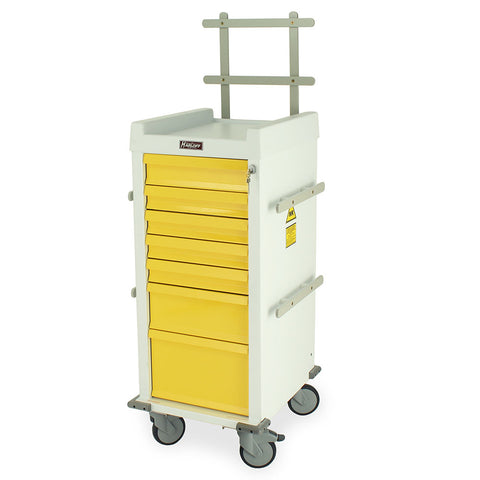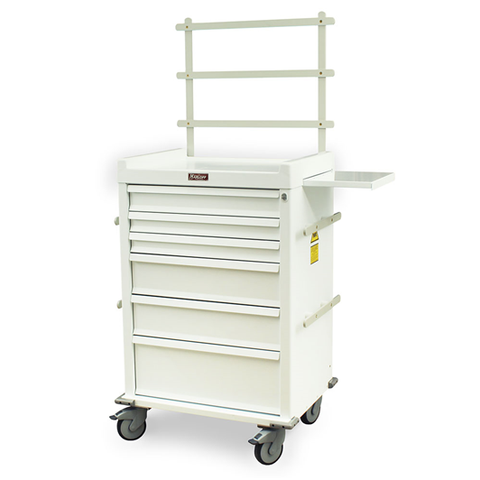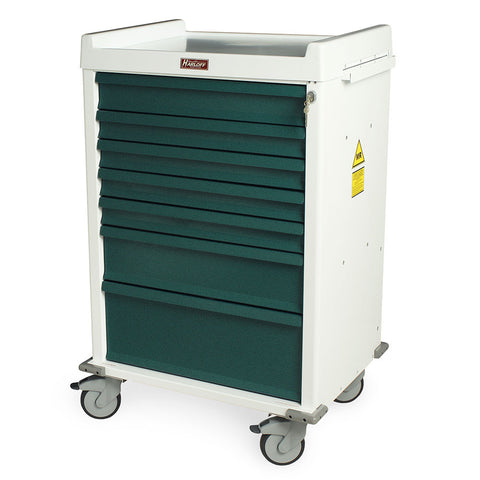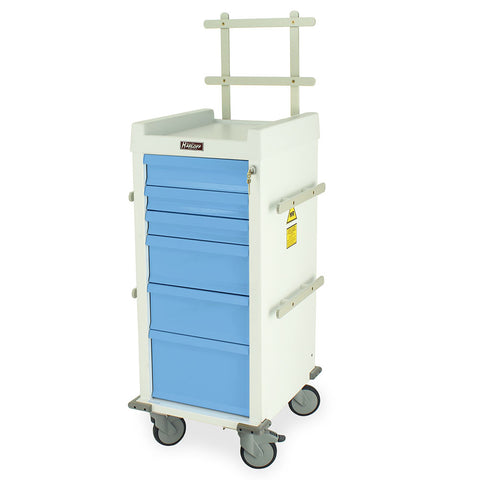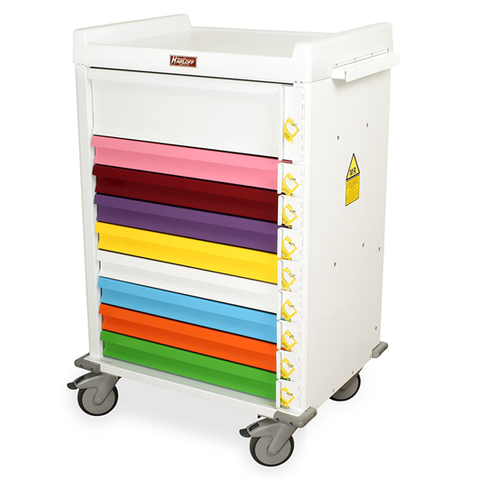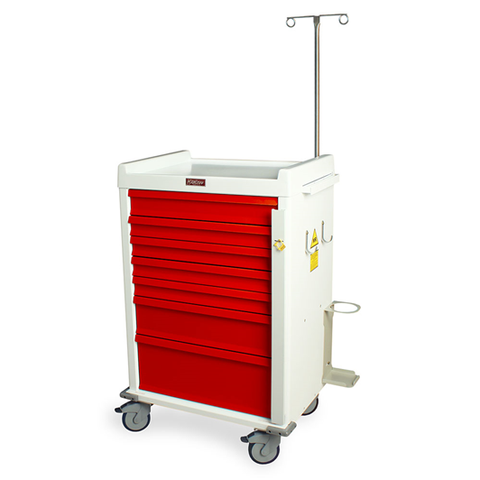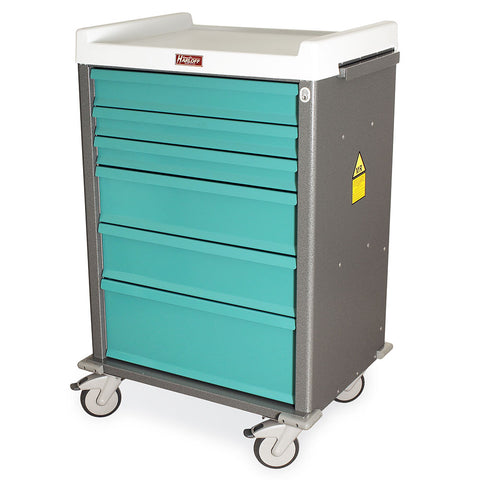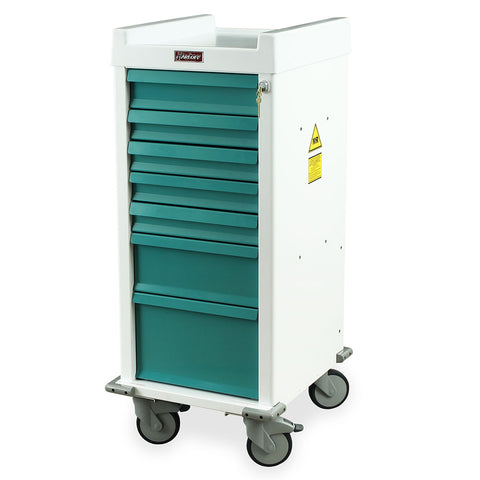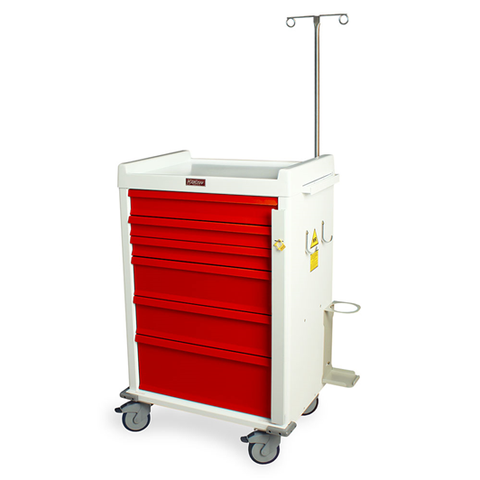MRI safety is crucial for protecting patients, staff, and imaging equipment. MRI scanners generate strong magnetic fields, making it essential to classify hospital areas into MR zones and carefully select equipment for each zone. This guide explains MR Zones 1–4, the types of equipment allowed in each, and best practices for managing MRI-safe devices. MRIMed offers a wide range of tested and certified equipment, including MRI-Conditional stretchers, wheelchairs, IV poles, and monitors, designed for safe use in all MRI zones.
Introduction to MR Safety Zones
What Are MR Zones 1–4?
The American College of Radiology (ACR) defines four MRI safety zones to manage access and protect individuals from magnetic hazards.
-
Zone 1: General public areas outside the MRI department, where no special training or screening is required.
-
Zone 2: The interface between public and controlled areas, where patients are screened, and MR staff orientation begins.
-
Zone 3: Controlled area adjacent to the MRI scanner, restricted to screened and trained personnel.
-
Zone 4: MRI scanner room itself, where magnetic fields are strongest and only MR-safe or MR-conditional equipment can enter.
Understanding these zones ensures proper workflow and minimizes accidents, especially when selecting MRI-safe stretchers and gurneys.
Why MRI Safety Zones Matter for Patients and Staff
MRI scanners generate strong magnetic fields that can turn ferromagnetic objects into dangerous projectiles. Clear zoning allows healthcare staff to manage access, reducing the risk of injuries or equipment damage. Patients with implants, such as pacemakers or neurostimulators, must also be guided through the zones safely. MRIMed products, including MRI wheelchairs, are designed to meet these requirements and reduce hazards.
Overview of Equipment Requirements by Zone
Each zone has specific equipment requirements:
-
Zone 1 & 2: Standard hospital equipment is generally safe.
-
Zone 3: Screening and controlled devices; MR-unsafe equipment must be restricted.
-
Zone 4: Only MR-safe or MR-conditional devices approved under ASTM F2503 standards can be used, such as IV poles and monitors.
This classification helps hospitals maintain compliance and ensures smooth MRI operations.
Zone 1 and Zone 2 Guidelines
Characteristics of Zone 1 and Zone 2
Zone 1 is a public space with minimal MRI risks. Zone 2 acts as a transition zone where patients are first introduced to MRI procedures. Staff must screen patients and visitors for ferromagnetic objects. MRIMed’s lightweight non-magnetic patient transfer devices can be prepared in Zone 2 before entering controlled areas.
Equipment Allowed in Zones 1 and 2
Standard hospital equipment, including non-MR devices, can remain in these zones. However, labeling and awareness are essential because these areas serve as checkpoints before entering Zone 3 or 4. Preparing MRI-Conditional stretches in Zone 2 ensures safe transition into controlled zones.
Staff Access and Patient Preparation Protocols
All staff and patients entering Zone 2 must undergo basic screening for metal objects. Visitors should be briefed about MRI safety, and patients must remove any ferromagnetic jewelry, watches, or devices. MRIMed provides guidance on integrating these protocols with equipment usage to streamline workflow.
Zone 3 Guidelines: Controlled Access Area
Risks Associated with Zone 3
Zone 3 is a critical area where the magnetic field starts to present significant safety risks. Unscreened equipment or personnel can cause accidents. Staff must enforce strict access rules and ensure only certified devices, such as MRI wheelchairs, enter this zone.
Permitted Equipment in Zone 3
Only equipment that has been verified as MR-safe or MR-conditional should be used in Zone 3. This includes patient transport devices, non-magnetic monitors, and IV poles. MRIMed offers a variety of IV poles and monitoring devices designed for controlled zones.
Safety Procedures for Staff and Visitors
Staff training is essential in Zone 3. Proper signage, access restrictions, and clear labeling of devices prevent accidents. Visitor education and guided movement reduce the risk of bringing unauthorized items close to the MRI scanner.
Zone 4 Guidelines: MRI Scanner Room
Why Zone 4 Requires the Strictest Safety Measures
Zone 4 contains the MRI scanner and the highest magnetic field strength. Even small ferromagnetic objects can become dangerous projectiles, posing severe risks to patients and staff.
Non-Magnetic and MR Safe Equipment Required
Only MR-safe or MR-conditional devices should enter Zone 4. MRIMed offers a full range of MRI-Conditional stretchers, gurneys, wheelchairs, IV poles, and monitoring equipment designed specifically for Zone 4 use.
Workflow Considerations for Patient and Staff Safety
Zone 4 requires carefully managed patient transfer and monitoring workflows. Using MRIMed non-magnetic equipment ensures smooth patient positioning, scanning, and retrieval without compromising safety.
Equipment Selection by MR Zone
MRI-Conditional Stretchers and Gurneys
MRI-Conditional stretchers allow safe patient transport within Zone 3 and Zone 4. These stretchers, such as MRIMed MRI-Conditional stretchers, are built with aluminum frames, non-magnetic wheels, and adjustable heights to facilitate comfort and workflow.
Equip Your Team with Tools They Can Trust
Get high-quality, MRI-dedicated equipment that supports safer scans, better positioning, and smoother patient care.
View Trusted ProductsWheelchairs and Patient Transfer Devices
Non-magnetic wheelchairs are essential for patient transfer. MRIMed provides lightweight MRI wheelchairs with ergonomic design for safe, smooth movement within MR zones.
IV Poles, Monitors, and Support Equipment
IV poles and vital sign monitors must be non-magnetic. MRIMed’s IV poles and monitors maintain stability and performance in MRI fields, preventing interference or hazards.
Surgical Instruments and Small Devices
Even small instruments like clamps or positioning aids must be verified for MR safety. MRIMed provides fully tested non-magnetic accessories suitable for Zone 4 procedures.
Compliance and Verification Across Zones
ASTM F2503 Standards and MR Labeling
ASTM F2503 sets the standard for MR-safe, MR-conditional, and MR-unsafe labeling. All MRIMed equipment meets or exceeds these standards, providing hospitals with documented safety compliance.
FDA Guidelines for MRI Equipment
The FDA provides regulations for MR device safety. MRIMed ensures all devices adhere to these guidelines, guaranteeing patient and staff protection.
Institutional Safety Protocols
Hospitals must implement protocols for staff training, equipment inspection, and proper device usage in all MR zones. MRIMed supports integration of these protocols with their products for workflow efficiency.
Common Mistakes and Safety Risks
Bringing MR Unsafe Devices into Zone 3 or 4
Introducing ferromagnetic devices into controlled or scanner rooms can lead to accidents. Only MRIMed tested and certified devices should be used.
Mislabeling or Misunderstanding MR Equipment
Confusing MR-conditional and MR-unsafe devices can compromise safety. Proper documentation and training are critical.
Inadequate Staff Training and Awareness
Even with correct equipment, untrained staff can make errors. MRIMed provides educational resources for staff on safe device usage.
Best Practices for Managing Equipment in MR Zones
Staff Training Programs and Signage
Regular training sessions and clear signage ensure staff understand which equipment is allowed in each zone.
Equipment Inspection and Documentation
Routine inspections of stretchers, wheelchairs, IV poles, and monitors verify ongoing compliance. MRIMed provides guidance on inspection schedules and record-keeping.
Establishing Zone-Specific Workflows
Defining workflows for patient transport, scanning, and retrieval ensures smooth operations and prevents MR safety incidents.
FAQ:
-
What types of equipment are allowed in each MR zone?
Zone 1-2: Standard hospital devices. Zone 3: Screened MR-safe or MR-conditional devices. Zone 4: Only MR-safe or MR-conditional devices certified for high magnetic fields.
-
Can MR-Conditional devices be used in all zones?
MR-conditional devices are safe only under defined conditions in Zone 3 or Zone 4.
-
How do I verify that equipment is MR Safe?
Check ASTM F2503 labels, manufacturer documentation, and use magnetic testing tools if necessary.
-
What should I do if equipment is unlabeled or mislabelled?
Do not use it in controlled zones until verified by the manufacturer or a qualified MRI safety officer.
-
How often should MRI zone protocols be reviewed?
At least annually or whenever new equipment is added or procedures change.
